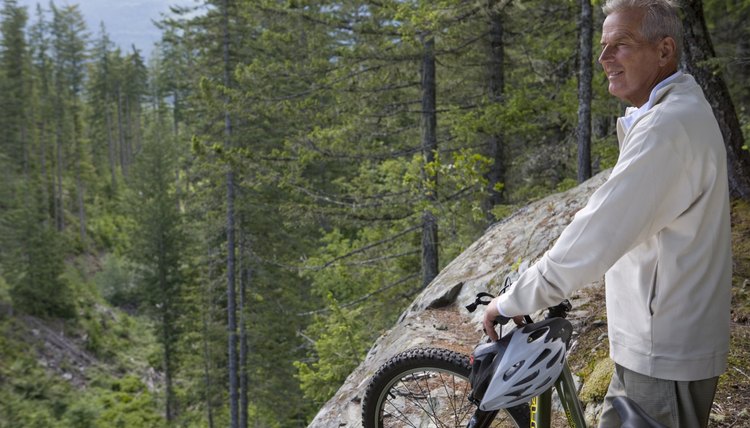What does fact checked mean?
At SportsRec, we strive to deliver objective content that is accurate and up-to-date. Our team periodically reviews articles in order to ensure content quality. The sources cited below consist of evidence from peer-reviewed journals, prominent medical organizations, academic associations, and government data.
The information contained on this site is for informational purposes only, and should not be used as a substitute for the advice of a professional health care provider. Please check with the appropriate physician regarding health questions and concerns. Although we strive to deliver accurate and up-to-date information, no guarantee to that effect is made.
Exercises for Senior Citizens

Exercise can have profound effects on a senior citizen’s vitality and overall well-being. Staying active can help to reduce pain and stiffness, improve energy levels and increase strength. Older adults who exercise are more mobile and independent. Senior citizens need to get a mix of four types of exercise: endurance, strengthening, stretching and balance. Your routine can be simple and does not have to involve elaborate or expensive equipment.
Endurance
Endurance exercises, which benefit the heart and circulatory system, include walking, bicycling, swimming and dancing. Rebounding on a mini trampoline can be an ideal exercise for senior citizens as well, because it is gentle while being highly beneficial to the body. If you are already active and physically fit, try more strenuous endurance exercises, such as hiking, jogging or tennis. Exercise with a buddy who can keep you motivated and provide valuable social interaction. Exercising outdoors can be preferable, depending on the weather and season, because you get much-needed fresh air and vitamin D from sunlight at the same time.
Strengthening
Strengthening activities, which build muscles, boost metabolism and strengthen bones, include lifting free weights, using resistance bands, squatting while holding onto the side of a chair or doing push-ups on the wall. Metabolism slows as a person ages, but strengthening exercise can counteract that and help with weight loss as well. Strong bones are necessary for preventing osteoporosis and bone loss, and strong muscles can help you in completing everyday tasks such as lifting groceries and doing housework. Joining a strengthening exercise class at the local gym, city recreation center or senior center can provide the added perk of social interaction, which is highly important for seniors.
Stretching
Maintaining flexibility is a key benefit of stretching exercises, which can include a unique discipline such as yoga or Pilates, or be incorporated as a preface to the other three types of exercise. Always stretch before starting your endurance and strengthening exercises. For a simple stretch, sit close to the front end of a chair and lean back on your hands. Stretch your legs out straight in front of you. Stretch your feet and ankles by extending your feet toward and then away from your body. Some venues offer stretching exercise classes designed specifically for senior citizens, with exercises and intensity levels appropriate for older adults.
Balance
Balance exercises can minimize the risk of falls, which can result in serious complications for seniors. They can also improve posture and body mechanics. Some simple balance exercises that you can do anywhere without equipment include standing on one foot, and getting up and down from a chair without holding onto the chair. You can also try walking heel to toe, by placing your heel directly in front of the toes of your opposite foot as you walk.
Considerations
Stay well hydrated while exercising by drinking plenty of fresh, clean water.You're never too old to begin or resume an exercise program. Senior citizens who have not exercised recently can still get into shape and feel better in the process. Seniors should use a great deal of caution when exercising, especially when just beginning to get more active after a sedentary spell. To reduce the risk of injuries and falls, start slowly and gradually build up to more repetitions and more challenging exercises in your routine. Stop exercising immediately and contact your health practitioner if you develop symptoms such as chest pain, shortness of breath or dizziness, or if you fall or injure yourself while exercising.
References
Resources
Writer Bio
Judy Wilson has writing and editing expertise in health, technology, pets, business and travel. She has contributed to USAToday.com, SFGate.com and numerous other publications. Wilson earned a Bachelor of Arts in journalism and mass communication from the University of North Carolina at Chapel Hill, where she completed Mini Medical School.
